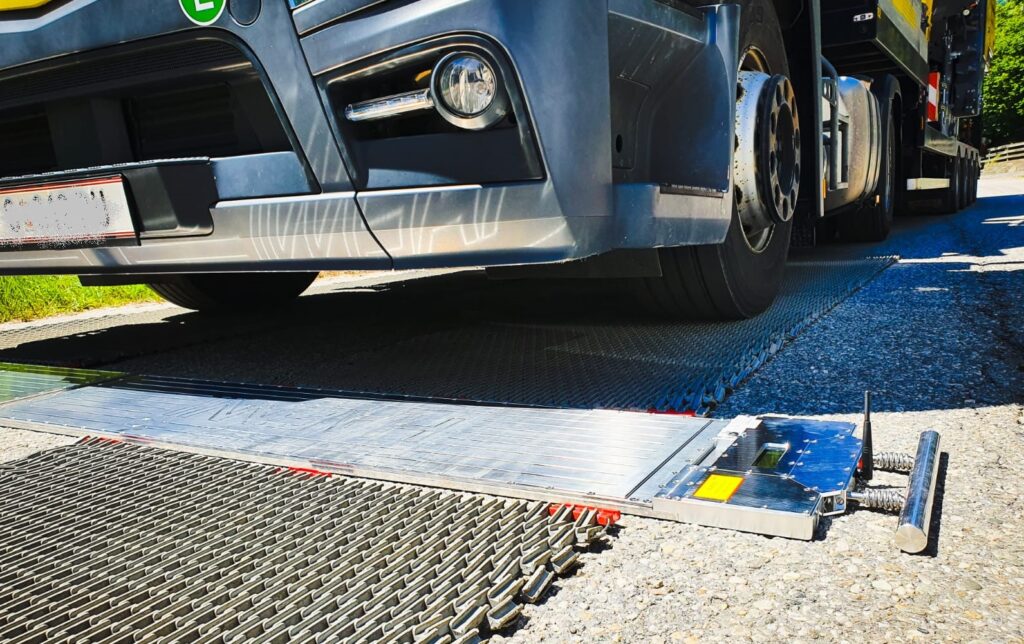Improving load security with portable scales
The numbers are shocking: up to 25% of truck accidents are linked to overloaded or improperly loaded trucks, according to a study concluded by EU-OSHA, European Agency for Safety and Health at Work. Collisions which involve trucks normally have serious consequences due to the size and weight of the vehicles. Even the type of goods being transported can influence the severity of the accident.
Traffic regulations clearly state that the driver must ensure their vehicle and load are in proper condition. This does not change even if the load is prepared and secured by third parties. Whoever tampers with this is liable for resulting accidents and must expect criminal consequences. Despite this, some drivers deliberately overload the axles of their trucks in order to have a better grip of the road, especially when it snows, without considering that such behavior endangers other road users and costs taxpayers a lot of money when it comes to road maintenance and repairs.
But deceit, negligence and carelessness are not the only causes overloaded or improper loaded trucks. Every truck driver knows that the weight on a truck must be distributed evenly on the axles to comply with the chassis manufacturer’s axle ratings and weight laws. Nevertheless, even when all measures to secure the load are strictly followed, there are situations where it is very difficult to know for sure if a truck is correctly loaded at all times.
For example, if a vehicle makes partial deliveries, the distribution of the load changes at each stop, which can happen in a way that means the centre of gravity is also displaced. If the goods are heavy it may lead to accidents. Another situation is when an absorbent load is uncovered, like wood for instance. If it rains the load became much heavier due to the absorption of water, thus the initial weighing condition of the vehicle has been changed.

At the border
Load security can be particularly critical when crossing borders, especially for exceptional transport – vehicles whose cargo surpasses the usual limits of weights and dimensions allowed and therefore requires a special permit. EU countries have different requirements on this – concerning maximum total weight, axle weight and dimensions, meaning the truck drivers often have to adapt the truck to the norms of the next country they are going to drive through. This adaption can be, for instance, a change in the distance between axles, which in turn unsettles the axles weight. If the axle weight is increased over the limits allowed, a fine can be given or the permit to drive further can be denied, while also causing unnecessary wear of tyres and suspension that might bring the vehicle to an unplanned visit to the garage.
To avoid such issues, on-the-spot, axle weight control is recommend.
A portable solution
With HAENNI portable scales, it is possible to determine the weight of wheels and in any axle configuration, on the spot. Used by the police in more than 100 countries, HAENNI wheel load scales are light and easy to handle. With a minimum equipment of two scales and four small levelling mats, they can be operated by just one person and do not occupy significant cargo space. Although the scales are OIML R76 class IIII certified with an accuracy of +/- 0,5%, weighing methods and circumstances might not always be ideal. The officials who conduct the weigh enforcement operations in Switzerland and in most European countries apply a tolerance deduction from the determined weighing results to ensure that no driver is unfairly punished.
Source: https://tti.mydigitalpublication.co.uk/publication/?m=63358&i=685108&p=50

